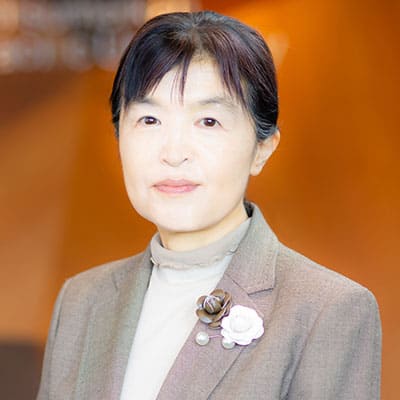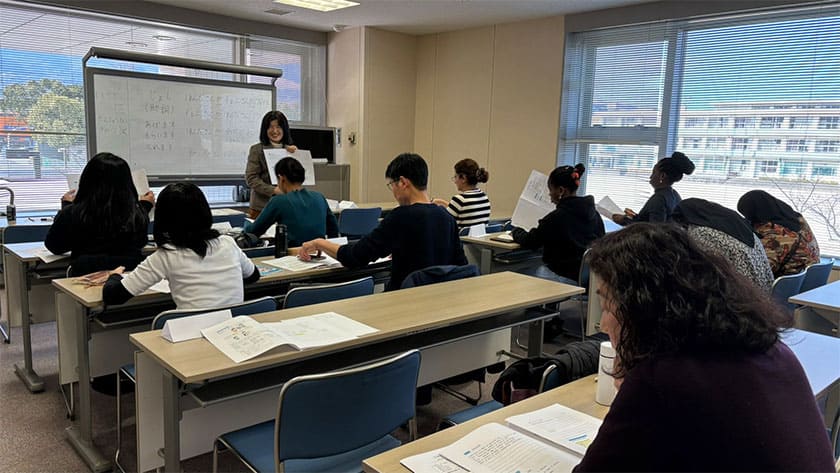Create a Universal Japanese that Promotes Diversity
Categories:
Overview
Beyond “Simple Japanese”; Create a language environment for a society where diverse people live together
Foreigners (individuals from abroad) living in Japan continue to increase. There were more than 3.58 million people from abroad in Japan at the end of June 2024, and the number of foreign workers is predicted to exceed 6 million by 2040 (*). We need to lower the language barrier for a society where people with diverse backgrounds work and live together. To accomplish this, we will expand the potential of the Japanese language. That is what this study aims to do.
The fact that people from abroad were also victims in past earthquake disasters led to the call for “Simple Japanese.” Today, “Simple Japanese” is widely recognized, with many government offices endorsing it. I, the principal investigator of this study, also started activities to spread “Simple Japanese” to speakers of Japanese while also taking on Japanese language education for people from abroad. Through those activities, I came to question the nature of “Simple Japanese.”
“Simple Japanese”, in a manner of speaking, aims for “barrier-free” by saying “if we rephrase the Japanese like this, it will make it easier for people from abroad.” If we were to compare this to a building, “barrier-free” would mean taking measures such as adding ramps alongside existing stairs for people with disabilities. This modification would make it possible to cope with the situation, but it is likely there would be complaints that it is hard to use, and it also would lead to the division of people into those with and those without disabilities. On the other hand, the planning and design for a universal design building is premised from the very start on it being used by all people. Thus, something with a single design is shared and used by everyone.
This study goes beyond “Simple Japanese” and aims to universally design Japanese. It is a proposal for what new communication, based on an intrinsic understanding of Japanese, should be like rather than a manual for simply rephrasing things. I am certain that the importance of this perspective will increase in the next generation of Japanese society, where diverse people will live together.
*From materials from the Immigration Services Agency and National Institute of Population and Social Security Research

If “Simple Japanese” is turned into a manual for rephrasing language “for someone,” then we will only be able to address individual “language barriers” after they arise. In a society where diverse people live together, including people from abroad, children, senior citizens, and individuals with disabilities, the creation of a universal design Japanese environment that everyone can easily use is what is called for.
Novelty/Originality
Essential Japanese language research that is not “for people from abroad,” but that aims to be “for everyone”
“Simple Japanese” is currently recognized as a method for making communication with people from abroad go smoothly. Promotional activities are focused on creating guidelines to rephrase difficult words in a simpler way and on targeted responses, such as “try speaking to people from abroad like this.”
However, with this study, I believe a significant problem lies in that approach. This is because creating a framework for “Japanese for people from abroad” actually divides Japanese people and people from abroad, and could possibly hamper communication. Also, just offering set rules for rephrasing things won't work to handle the various communication challenges people are confronted with in real life. In this study, I came to the conclusion that it is objectively understanding Japanese constructions and nurturing a capacity for flexible adjustments as circumstances warrant that is important.
In a society where diverse people live together, this perspective is key. By consciously understanding Japanese constructions that are used casually, we can develop the ability to choose and adjust our words appropriately depending on who is being spoken with and the circumstances. That is, it will be an ability that can be used in communicating with people in any position, not only learners of Japanese, but also children, senior citizens, and others.
The viewpoints for a study of this sort grew out of my career history and experiences. I dealt with Japanese first as a junior high school Japanese instructor. Later, I studied linguistics in graduate school, and then I obtained my doctor's degree in linguistics while also involved in Japanese language education for international students as a university faculty member. In short, I became involved in Japanese through both Japanese education as a first language and as a foreign language. It was having this multifaceted perspective and leading trainings for adults using “Simple Japanese” that led me to recognize these essential issues.
With this study I aim to move beyond the framework of “Japanese for people from abroad” and create a language environment by means of universal design Japanese that will be easy for all people to use.
Related Research
Developing Method of Teaching ‘Information Literacy in Times of Disaster’ in Japanese Language Teaching Grants-in-Aid for Scientific Research
A project for moving from the classroom to the community -The roles of Japanese instructors to facilitate students’ learning and study in society-Grants-in-Aid for Scientific Research
Principal Investigator

Ritsumeikan Asia Pacific University
You can view and print a summary of this page's contents in a single PDF page here.







I have worked at APU for 25 years and taught Japanese to students who have gathered here from more than 100 countries and regions around the world. As a member of the Center for Language Education, I have more than 100 colleagues who are teaching 8 languages, including Japanese. Of my colleagues, about one-third of them have Japanese as their first language. Having learned through trial and error in this type of environment, I now feel like maybe I'm living ahead of my time in Japanese society of 20–30 years from now.
Having come into contact with more than 2,000 international students while teaching Japanese, I realized that assumptions such as “people from this country are like this” and “because they are people from the same group, they have the same culture” don't hold true. Culture is something that is different for each person. If you have 10 people, it doesn’t matter where they are from, they will have 10 cultures.
Through meeting each of these students in person in this type of environment, I think I began to see the essential challenges surrounding Japanese.
The Japan of the future will be a society where diverse people will live together. So we will need a universal Japanese that is easy for anyone to understand and use, not just change our words depending on the category of person we are talking with. To that end, first it is not “Japanese as a first language” or “Japanese as a foreign language”; we must solidly construct a Japanese for understandable communication. Taking advantage of my experience and research, I hope to contribute to creating a Japanese language environment for a new era.
Ritsumeikan Asia Pacific University Faculty Information
researchmap